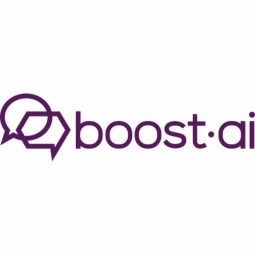Overview
This profile is not managed yet, if you would like to manage
this profile, please contact us at team@asiagrowthpartners.com
this profile, please contact us at team@asiagrowthpartners.com
 |
boost.ai |
| Norway | |
| Sandnes | |
| 2016 | |
| Private | |
| $10-100m | |
| 51 - 200 | |
| Open website |
IoT Snapshot
Technology Stack
Case Studies
Number of Case Studies10
|
Conversational AI Enhances Internal Support and Efficiency at Aker BP
Aker BP, one of Norway’s largest oil exploration and development companies, faced a significant challenge in providing efficient internal support to its approximately 2,000 employees across five offices and various offshore sites. Initially, the company relied on administrative assistants to handle queries related to IT, HR, training, supply chain management, and more. However, as the company grew, this approach became less efficient, with support staff becoming overwhelmed with repetitive tasks and queries. These tasks, while important, consumed significant amounts of time, diverting them from key tasks such as recruitment, training, and organizational development. Aker BP sought to move away from a reliance on human support and aimed to achieve administrative self-service by increasing employee efficiency while maintaining the high level of service they were accustomed to. The company aimed to create a central hub of knowledge that employees could easily access for answers, while still having support staff available for more complex requests. |
|
|
Enhancing Customer Experience in Insurance with Conversational AI
Aspire General Insurance Services, a California-based private passenger auto liability and physical damage carrier, was facing challenges in managing customer service efficiently. The company, which handles all aspects of the insurance process, was relying heavily on human agents for customer interaction and professional conversations across the insurance cycle. This reliance was making optimal customer service cumbersome and time-consuming. The customer service team, including chat services, was supported exclusively by human agents, which limited the resolution time for customer chats and led to elevated wait times for simple customer inquiries. Depending on various factors like staff turnover and external pressures, customers sometimes had to wait for as long as half an hour to be served. |
|
|
Íslandsbanki's AI-Powered Virtual Agent Automates 50% of Chat Traffic in Six Months
Íslandsbanki, one of the three major banks in Iceland, was facing a challenge in managing its customer service. The bank was trying to make the banking experience more digital and less branch-heavy, while simultaneously improving its infrastructure. They identified a growing desire amongst their customer base to interact via online channels. However, during incidents where the bank’s app or website login experienced downtime, calls to the contact center would skyrocket, potentially leaving customers hanging after phone lines closed for the day. The bank did not have a 24/7 call service, and they needed to control what was happening in the call center. They realized that a chatbot could be a viable alternative channel to manage the increasing demand for online chat as opposed to phone calls. |



